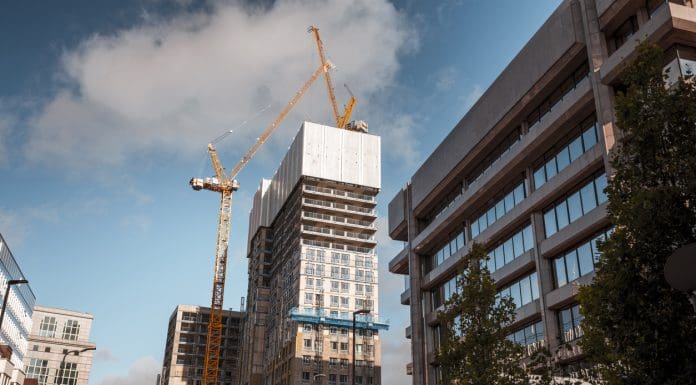Peter Doyle, head of Health and Safety Services at Citation, spotlights some of the main challenges surrounding the Building Safety Act and explores where more clarity is needed to encourage industry-wide compliance throughout every stage of the building lifecycle
Described by the ex-Housing Secretary Robert Jenrick as “the biggest change to building safety regulation in a generation”, the Building Safety Act 2022 was brought in to enhance safety and accountability within the building industry. It is a direct response to the Grenfell Tower tragedy and the subsequent Hackitt Report, which highlighted glaring oversight in building safety regulations.
The Act applies to residential Higher-Risk Buildings (HRBs), which contain at least two residential dwellings and are over 18m or seven storeys in height. It imposes stringent duties to ensure that buildings meet rigorous safety standards to protect both the premises and its users.
However, since its implementation, there has been considerable confusion among stakeholders, from contractors to management companies and even estate and lettings agents. Uncertainties centre around compliance requirements and the scope of regulations due to the complex legal language and the broad range of the Act’s stipulations.
The Building Safety Act focuses on responsibility and accountability
Faced with more scrutiny than ever before, there’s an increased demand on contractors for transparency and diligence to prevent cut corners or substandard practices – and it all comes down to competence.
The Act enforces new requirements that apply to any persons carrying out building or design work and states they must be competent in doing so. This sounds obvious, but there is widespread confusion around what ‘competence’ actually means. And, unfortunately, until we begin to see reported cases of competence being called into question coming through the courts, and greater legal clarity being provided, it will continue to mean different things to different people.
Considering that non-compliance risks are higher under the new Act, with potential legal and financial repercussions, regulators should leave no room for confusion. What the industry needs is a clear definition of what it means to be competent and how employees can not only demonstrate their depth of skills but prove that they’re maintained over time.
Another common misunderstanding is whether the Act applies to smaller developments, and this stems from a desire from those in the industry to act responsibly. On paper, it only applies to buildings over 18 metres. However, in the wake of the Grenfell disaster, developers, contractors and even buyers and tenants are more safety-conscious and concerned about features such as cladding and fire doors – with concerns now, reportedly, even stopping property sales from going ahead in some cases.
Of course, whether you’re a major player or a small contractor, nobody wants to breach legislation – it’s not good for business, and reputational damage is far more expensive than any monetary fine. What’s more, the cost of complying today is far less than retrofitting in future. The issue is that people aren’t sure what exactly they’re complying with – and therein lies the need for more clarity.
Appointing a Principle Accountable Person (PAP)
Another area of uncertainty is around the Act’s stipulation to appoint a Principal Accountable Person (PAP). This person will be responsible for registering the building with the new Building Safety Regulator (BSR), among other accountabilities, such as applying for a Building Assessment Certificate, preparing a Safety Case Report, creating a resident engagement strategy and complaints procedure and reporting incidents, such as fires. Crucially, once the building is complete, the PAP can’t be a member of the original site team.
Safety practitioners will welcome this change, as it’s beneficial to have a clearly nominated individual and focal point for ensuring regulations are adhered to, and buildings and their people are kept safe. Unfortunately, what we’re seeing at the moment is a reluctance from people to step up and take on the role of the PAP – there’s lots of passing the buck between stakeholders, and again, this comes down to a lack of clarity. This element of the Act is written with the best intent, but it lacks a clear definition of who the accountable person should be and exactly what they’re accountable for.
Essential paperwork
With the introduction of the Building Safety Act comes a legal requirement to keep comprehensive documentation on the management of safety risks during the design, construction, completion and occupation of high-rise buildings.
Often, those appointed as the PAP already have vast operational responsibilities, so it can feel overwhelming to know that something as onerous as building safety is among them. However, health and safety support providers can relieve the pressure by offering advice and tools to make documentation and compliance easier to manage.
The Building Safety Act is a well-meaning piece of legislation, but some areas remain unclear, meaning it’s difficult to put into practice. The truth is that when people are unsure, they will make unknowing mistakes until it’s challenged in a court of law. The concern is that this will breed a culture of risk aversion, or worse, will lead to contractors cutting corners and passing blame as the Act is not specific enough about who should take responsibility and exactly what for.
Everyone agrees that keeping buildings and people safe is paramount, and it’s vital to do everything possible to prevent injury or fatality. As a group of like-minded individuals, the industry should come together to express exactly what they need to ensure the Building Safety Act works as effectively as intended.
Through increased clarity and well-defined standards, we can avoid stakeholders fighting their own corner and ensure the focus remains where it needs to be – on compliance and safety.
Peter Doyle
Head of Health and Safety Services at Citation
The post Why the sector needs more clarity on the Building Safety Act appeared first on Planning, Building & Construction Today.


